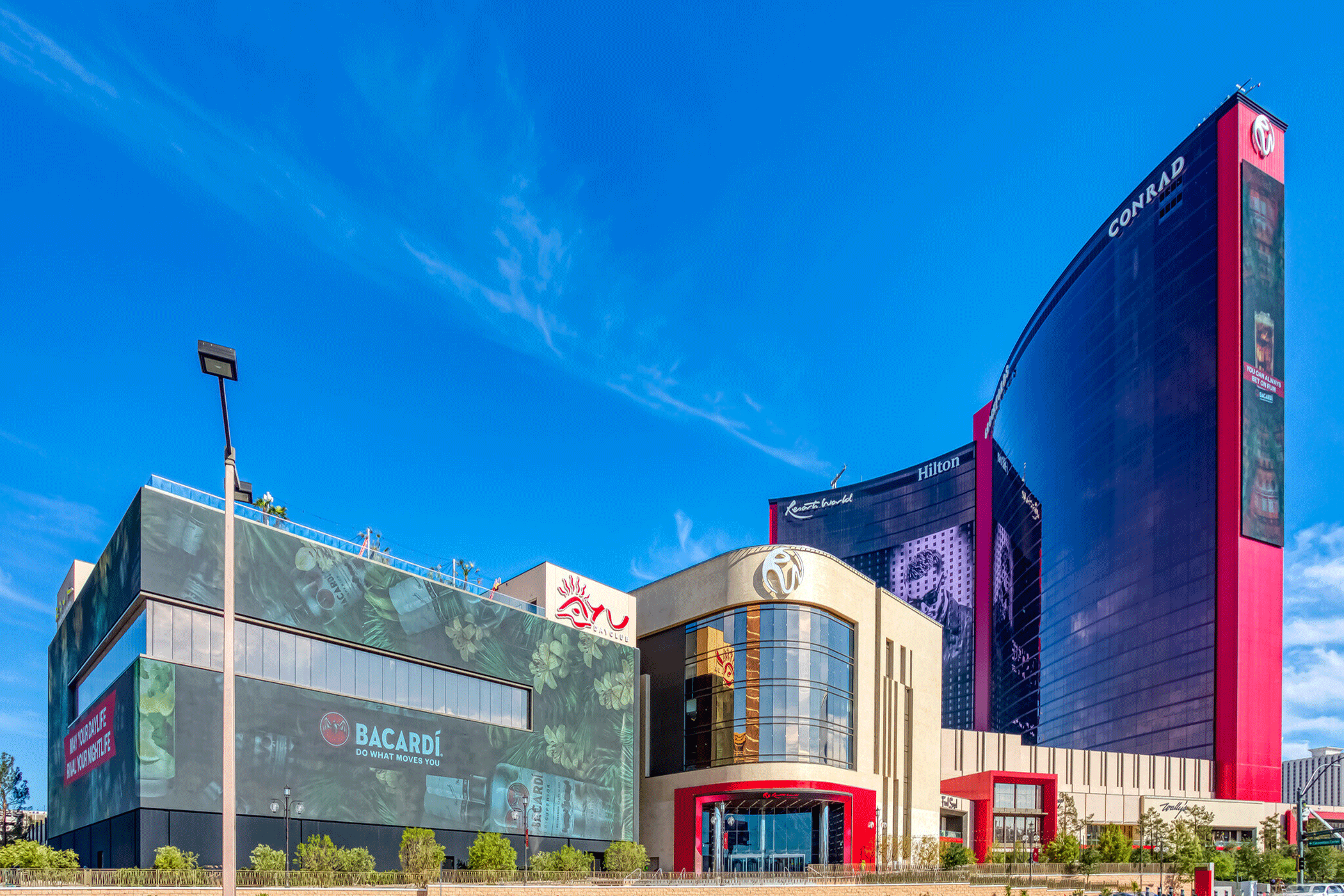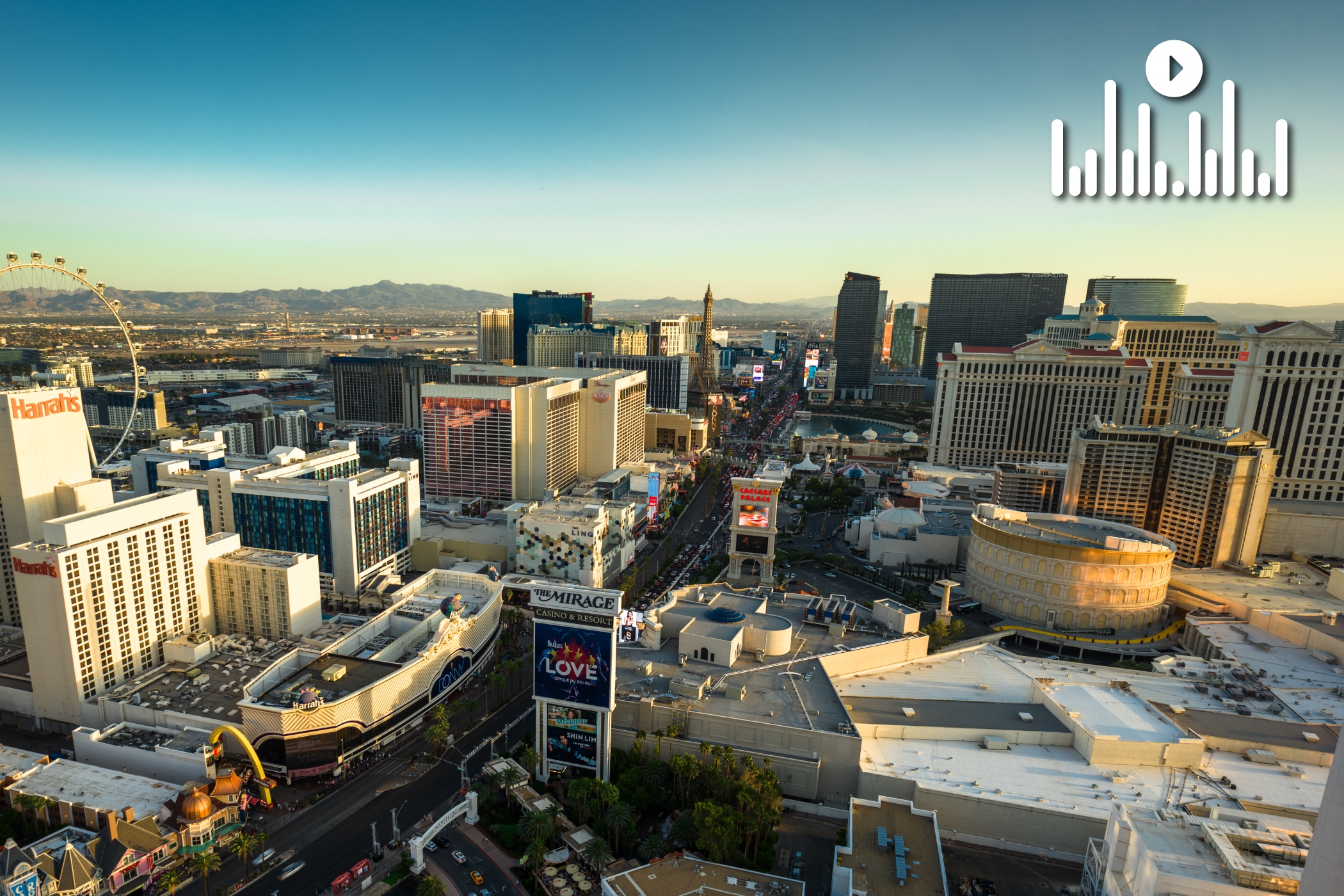Major events in Las Vegas are boosting tourism and driving record investment activity across the commercial real estate sector.
In the past five years, Las Vegas has welcomed new sports teams and supporting infrastructure, notable resort openings, a record addition of apartment units, new entertainment venues, and most recently has became a host city for Formula One. On Feb. 11, Allegiant Stadium in Paradise, Nevada, will become center stage for Super Bowl LVIII for the first time.
Analysts keeping close watch on Las Vegas said that this is only the tip of the iceberg in terms of what the market can achieve.
Las Vegas has secured a 10-year contract to host a Formula One Grand Prix event and has already finalized the date of the next race.
“The economic impact is undeniable,” Michael Petrivelli, CoStar’s Nevada and Utah director of market analytics, said in an episode of the Hotel News Now podcast.
Gaming revenue surged to $1.37 billion when F1 arrived, marking an increase of nearly 13% from November 2022, he said. This was just shy of the monthly record of $1.4 billion in July.
“Thanks to historic tourism and tax collection numbers, the Nevada state budget actually had $50 million surplus last year and $200 million more than previously projected for its two-year budget,” he added. “Currently, they’re working with the largest state budget in history.”
Spectators of the Las Vegas Grand Prix extended their hotel stays in the market longer than in Austin and Miami, which also hosted F1 races in 2023, said Emmy Hise, CoStar’s senior director of hospitality analytics for the western U.S.
Hotels generated nearly $220 million in room revenue because of the race. Average daily from from Thursday to Saturday night during the week of the event was $629, which is a $360 increase compared to the prior year in the same week, she said.
“It could just be because of the first year [of Las Vegas hosting it], getting it set up, people wanted to find the perfect place to stand. Or it could have been people saying ‘I want to come early and do something else, the shows, the casinos,'” she added.
When the NFL and its fan base comes to Vegas for the Super Bowl, the city is likely to rake in even more in revenues, which of course can feed additional development that could drive more tourism. It’s an enviable cycle for any destination city.
Super Bowls are always major revenue-generating, star-studded events, Hise said. But she said the Vegas Super Bowl could boost revenues by even more than previous host cities if spectators take advantage of all that the city has to offer.
Citing Casino.org figures, CBS Sports reported this week that the average cost of a ticket for this year’s Super Bowl is more than $10,000, and that doesn’t even include airfare, a hotel and food or drink.
The Las Vegas Conventions and Visitors Authority expects fans to spend an extra $1,700 on food and drink, shopping and other entertainment.
And the Las Vegas Review-Journal surveyed 138 Las Vegas hotels recently, reporting that hotel rates for Super Bowl weekend will average nearly $450 a night before taxes and fees. On the Strip, that average across 36 hotels rockets up to more than $856 a night.
For more insights into tourism and commercial real estate activity across the Las Vegas market, listen to the full podcast episode below with CoStar’s Emmy Hise and Michael Petrivelli.
Hise said there’s a total of 101 hotels in the Las Vegas Strip submarket, which represents 62% of the rooms in the entire Las Vegas market.
The Strip is the largest submarket of all submarkets tracked in the U.S., holding 57,000 more rooms than the second-biggest U.S. submarket, which is the Chicago central business district.
Las Vegas is by far the largest U.S. hotel market by room count, Hise said, and has 34,000 more hotel rooms than the second-largest market Orlando.
“That just paints a picture of how many hotel rooms are in this tiny geographic region,” Hise said. “Hotels in Las Vegas are basically city centers.”
The only hotel opening on the Strip in 2023 was the 3,644-room Fontainebleau. However, the sheer size of it was enough to break records.
It marks the highest room inventory increase in the Las Vegas Strip since 2010.
Outside of hotels, the apartment and industrial sectors have been the most active for development in Las Vegas, Petrivelli said.
In 2023, construction was completed on 5,600 apartment units in Las Vegas. Petrivelli said that’s an all-time high, shattering the previous record of 3,600 units in 2020.
A record 8.7 million square feet of space was delivered in the past year across Las Vegas’ industrial market. The office and retail segments, however, have had limited construction since the Great Recession.
Institutional capital largely sat on the sidelines in 2023, though some players were active.
In August 2023, Realty Income Corp., a real estate investment trust, signed a definitive agreement to purchase common and preferred equity interest from Blackstone Real Estate Income Trust in a joint venture that owns 95% interest in the Bellagio. The deal values the hotel at $5.1 billion.
In another significant deal by a real estate investment trust, Apple Hospitality REIT purchased the SpringHill Suites by Marriott Las Vegas Convention Center for $75 million at the end of December.
Petrivelli said there was a major drop-off in capital deployment across the industrial sector in the second half of 2023, but Las Vegas is still holding up well.
“The biggest players here are Prologis, BKM Capital Partners; Blackstone has been the biggest investor in Las Vegas industrial in the past five years but they only deployed about $80 million last year,” he said. “That kind of goes along with the trend of institutional investors largely sitting out 2023.”
Resorts World Las Vegas is gearing up for the Super Bowl on Feb. 11.
The 3,506-room resort opened in 2021 and contains three Hilton brands: a 1,678-room Hilton, a 1,496-room Conrad by Hilton and the 332-room Crockfords Las Vegas, LXR Hotels & Resorts. Chief Marketing Officer Ronn Nicolli said the resort has been preparing for the Super Bowl for months.
“Vegas really has eliminated what used to be seasonality. It feels that consistently the entire year is busy, and that’s somewhat new,” he said. “It matured through ’22 and we saw increases, but we didn’t know if that was just revenge spend. But ’23 showed us a real next evolution in the growth of Las Vegas as a travel destination. In ’24, it doesn’t seem to be slowing at all. The group business and convention business is only expanding.”
Nicolli said it feels like Vegas hasn’t even hit its peak yet. Sporting events, for example, continue to be a catalyst for demand and programming on property, he said.
“F1 was a great example of the learnings that we have from previously in the year to really put together a great footprint with different activations. We’re looking at that similar model for Super Bowl,” he added. “When we start talking about the ideation and planning around sporting events in Las Vegas and how we can create Resorts World as a hub, it comes down to walking through that consumer journey and understanding what we can do better.”
Getting locals on board to participate in what Resorts World has to offer day to day and around special events is part of the strategy.

“We know it’s a commitment to drive to the Strip. I live it everyday. How do you create an experience that feels elevated, with a touchpoint that’s going to make a local feel special, that’s going to make them want to leave Green Valley, Summerlin or Henderson to come for the experience,” he said.
Nicolli said demand around the upcoming Super Bowl is greatly outweighing the demand around F1.
Beginning on the Monday before the big game through the weekend of the Super Bowl, Resorts World is running at high to sold-out occupancies, he said.
“The touchpoint becomes important. This is not our typical sold-out week or weekend. We understand that there was a premium to come in for this experience. That’s something that my hotel operations team takes very serious,” he added. “Someone coming out here that is choosing our property, that’s very meaningful to us. Someone who’s coming out here and has paid a premium holds more of a white-glove touchpoint that we need to make sure we’re on top of.
“The last thing we ever want is for someone to come out and have all these memorable experiences but we fall short in an area. We do not want to be the worst part of anyone’s trip. We talk about this frequently on check-in patterns, how we’re going to manage the front desk, how we’re going to manage arrivals, how we’re looking at entrance and exit patterns of consumers.”
Conversations that Nicolli has had with food-and-beverage teams include audience customization. The team is also making a point to over-communicate with guests.
MGM Resorts International President and CEO Bill Hornbuckle said during a panel at the recent Americas Lodging Investment Summit in Los Angeles that once Las Vegas got on its feet again after the worst of the COVID-19 pandemic, the city has taken off.
A joint venture between MGM and Anschutz Entertainment Group built T-Mobile Arena in 2016. The arena is situated on the Las Vegas Strip behind the New York-New York Hotel & Casino and and Park MGM Las Vegas.
Hornbuckle said his team programmed the stadium to host about 24 events a year. That number was surpassed in 2023 with 44 events.
“Las Vegas and our company had its best year ever by far,” he said, adding convention business makes up about 20% of MGM’s demand mix today.
Though occupancy levels at MGM are back to near 2019 levels, Hornbuckle said there’s still room to grow the metric. The lack of international travelers to the U.S. has been painful, he said.
The loss of business from the tech sector has also been apparent.
“It’s impacted us in a meaningful way. Las Vegas does 40% of our room nights in our meetings, convention business tied to tech. If you take that, and maybe 65% of our bottom line were tied to tech given their appetite to spend … getting that back, getting our international delegation back [is crucial],” Hornbuckle added.
Read more news on Hotel News Now.

